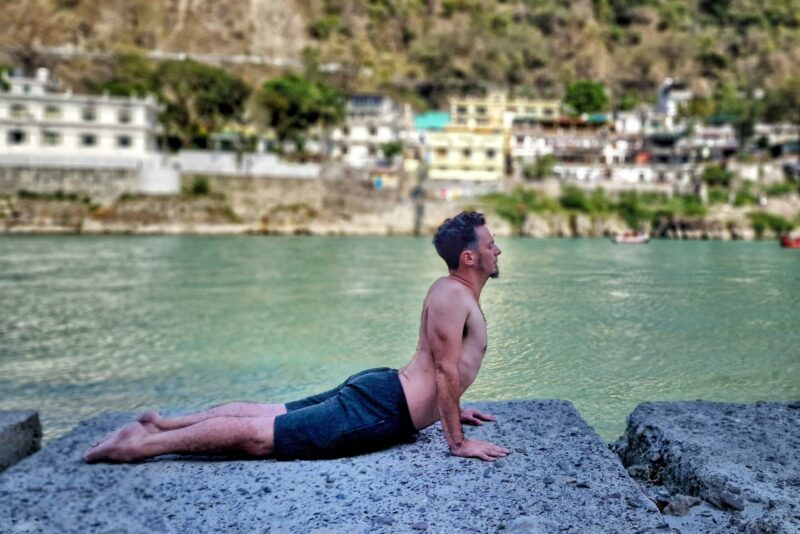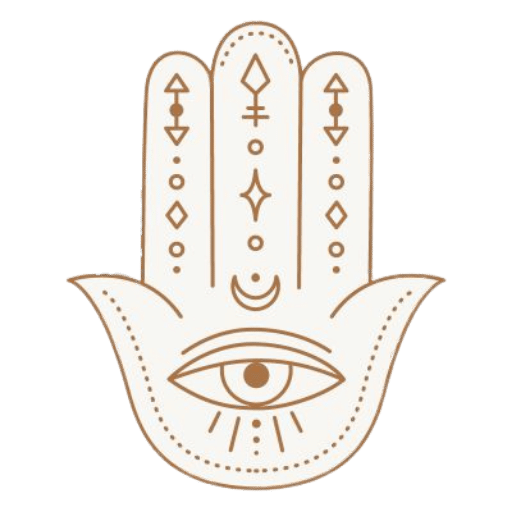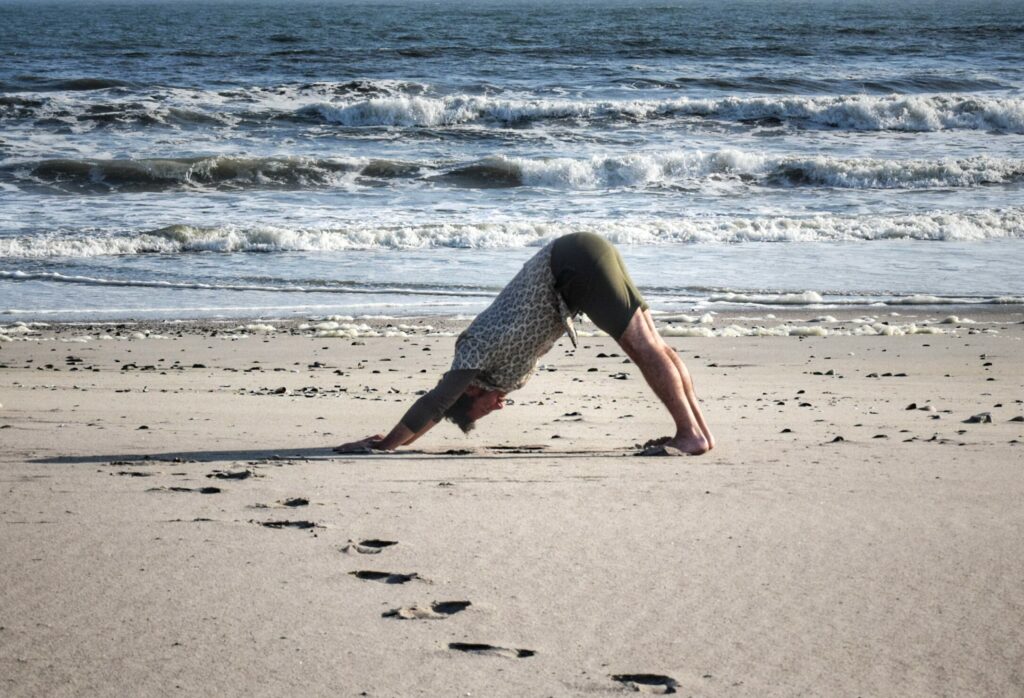
A traditional kundalini practice for Ajna Chakra, also spelled Agya Chakra, the 6th chakra and third-eye center. A Kundalini Kriya from the Himalayan lineage
For our series about the traditional chakra kriyas, here we present this kundalini practice for Ajna Chakra, also spelled Agya Chakra, the 6th chakra and third-eye center.
This practice comes from the Himalayan lineage and has been introduced to me in India by direct disciples of Swami Veda Bharati.
If possible, you should practice this kriya with closed eyes, without opening them from beginning to end. This will maximize the effect on the 3rd eye chakra.
Through this practice you’ll stimulate Ajna, cleansing it, and in turn, activating it, opening it, and eventually awakening this important energy center.
There are no contraindications for this kriya – if you have issues that restrain you from performing any of the asana or mudra, just apply a variation that’s suitable to you.
If Shambavi mudra or Shanmukti mudra feel uncomfortable, just skip them for now, and try again next time.
As we always do for these kundalini kriyas, we’ll go through a quick introduction to the chakra first, then we’ll describe each of the techniques involved in the practice. In the end, you’ll find the instruction to perform this kundalini yoga practice for the third eye center.
Check Also
> Kundalini Kriya for Vishuddi Chakra – A Traditional Yoga Practice for the Throat Chakra
> Kundalini Yoga Kriya for Sahasrara, the Crown Chakra
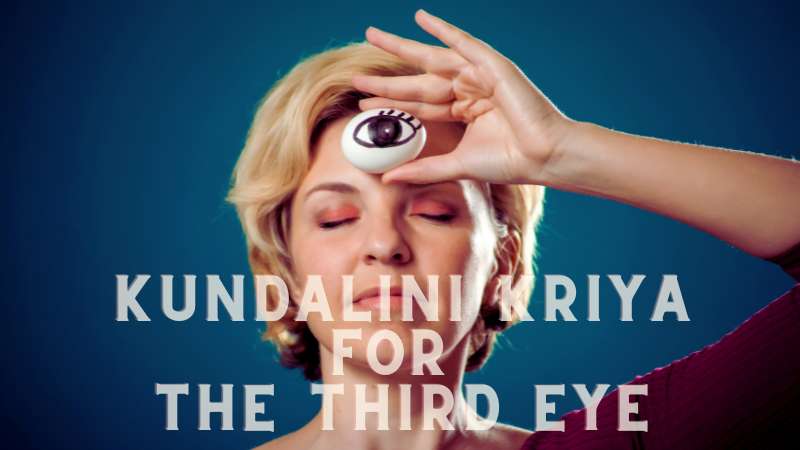
Agya Chakra or Ajna Chakra – The Third Eye Center
The Agya Chakra or Ajna Chakra, also known as the third eye, is the energy center located in the forehead, between the eyebrows. It is the seat of our intuition and higher consciousness. The Agya Chakra is where we access our inner wisdom and connect with the divine universal energy.
When the Agya Chakra is open and balanced, we experience clarity of thought and perception. We are able to see beyond the limitations of our physical senses and tap into our inner knowing. This can help us to make wise decisions and navigate life with greater ease and grace.
To awaken the Agya Chakra, we can practice certain yogic techniques, such as meditation and pranayama. This traditional Himalayan kundalini kriya is a great technique to heal, activate, and open the third eye center, it should be practiced frequently, once a week alternated with other chakra kriya is a good idea.
By focusing our awareness on the space between the eyebrows, we can activate this energy center and begin to access our inner wisdom.
However, it’s important to approach this practice with caution, if the Agya Chakra is overstimulated or unbalanced, it can lead to headaches, confusion, and other negative effects.
So, I encourage you to be mindful and patient in your practice. Take the time to cultivate a deep connection with your inner self and trust in your intuition. With practice, you can awaken the Agya Chakra and experience the profound benefits of living in greater harmony with the universe.
Does Ajna Chakra exist in the physical body?
The Ajna Chakra, also known as the third eye, is associated with the pituitary gland, which is located in the brain. The pituitary gland is often referred to as the “master gland” because it regulates the function of many other glands in the body, including the thyroid, adrenals, and ovaries/testes.
The pituitary gland produces a number of hormones that are essential for growth and development, as well as for regulating the body’s metabolic processes. When the Ajna Chakra is activated and balanced, it can stimulate the pituitary gland to function more efficiently, leading to better overall health and well-being.
In addition, the Ajna Chakra is also associated with the pineal gland, which is located near the center of the brain. The pineal gland produces melatonin, a hormone that regulates the sleep-wake cycle and helps to synchronize our biological rhythms with the natural cycles of the environment.
When the Ajna Chakra is awakened, it can help to balance the function of the pineal gland, leading to better sleep and a greater sense of harmony with the natural world.
However, it’s important to remember that the relationship between the Ajna Chakra and the endocrine glands is complex and multifaceted. While there is a correlation between the two, it’s not a one-to-one correspondence. The chakras are subtle energy centers that interact with many different aspects of the body and mind.
So, I encourage you to explore this relationship for yourself and to approach it with an open mind and heart. By cultivating a deeper understanding of the Ajna Chakra and its relationship with the endocrine glands, we can unlock the full potential of our inner wisdom and intuition.
Elements of this kundalini Yoga Practice for the Third Eye (Ajna Chakra)
1. Shambavi Mudra
Shambhavi mudra is a powerful yogic technique that involves gazing at a point between the eyebrows, this is called the “third eye center” or “eyebrow center”. Shambavi mudra helps activate the pineal gland, which is responsible for regulating sleep, mood, and overall well-being.
The practice of Shambhavi mudra calms the mind, improves concentration, and increases energy levels. It also helps balance the left and right hemispheres of the brain, leading to better coordination between the body and mind.
To practice Shambhavi mudra, sit comfortably with your spine straight and eyes closed. Roll your eyes upwards towards the middle of your forehead.
2. Shanmukti Mudra
In Sanskrit, “shanmukti” means “six-faced,” and it refers to the six main energy centers, or chakras, that are associated with this mudra.
Shanmukti Mudra enhances concentration by facilitating pratyahara, withdrawal of the senses, the fifth limb of yoga according to Patanjali yoga sutras.
Shanmukti Mudra is practiced with closed eyes. Bring your hands up to your face, with your elbows pointing out to the sides. Place your thumbs over your ear canals, your index fingers over your eyes, your middle fingers over your nostrils, your ring fingers over your upper lips, and your little fingers over your lower lips.
Gently apply pressure with your fingers to create a seal, but do not press too hard. Breathe deeply and evenly through your nose, focusing your attention on your breath and the sensation of the fingers on your face. You can hold this mudra for several minutes, or for as long as it feels comfortable.
Shanmukti Mudra is a powerful tool to activate the parasympathetic nervous system, the rest and digest section of our NS, thus promoting relaxation and helping to reduce stress and anxiety. It is also said to enhance the flow of prana, or life force energy, throughout the body.
This mudra is often associated with the practice of bhramari, as it happens to be the case in this kundalini kriya for the third eye. Nevertheless, both practices are very powerful to be practiced on their own and should be combined only when instructed.
3. Bhramari pranayama
Bhramari Pranayama is a powerful breathing technique that is known for its calming and soothing effects on the mind and body. It is also known as “bee breath” because of the humming sound that is created during the practice.
The word “Bhramari” is derived from the Sanskrit word “bhramar”, which means “bee”. In this practice, we mimic the humming sound of a bee to create a vibration in the body and calm the mind.
To practice Bhramari Pranayama, follow these steps:
- Sit comfortably in a quiet place with your back straight and your eyes closed.
- Close your ears using index fingers or thumbs. Cover your eyes with the palms of your hands without applying pressure.
- Take a deep breath in through your nose, hold for a second.
- As you exhale, make a high pitched humming sound, like that of a bee. Feel the vibration in your body.
- Continue to breathe in and out in this way, focusing on the sound and vibration.
- You can practice Bhramari Pranayama for 5-10 minutes, gradually increasing the duration as you become more comfortable with the practice.
The benefits of Bhramari Pranayama are numerous. It is a great practice for reducing stress and anxiety, improving concentration and focus, and promoting relaxation and sleep. It can also help to regulate blood pressure, reduce headaches and migraines, and alleviate tension in the face and jaw.
In addition, Bhramari Pranayama can be helpful for people with respiratory issues, such as asthma or bronchitis, as it can help to improve lung function and clear the airways.
There are many peer-reviewed studies on the benefits of Bhramari, here’s is one of several examples.
I encourage you to incorporate Bhramari Pranayama into your daily practice. It is a simple yet powerful tool that can help to bring balance and harmony to your life.
4. Balasana (Child Pose)
Balasana, also known as Child’s Pose, is a gentle and restorative yoga posture that is often used as a resting pose during a yoga practice. It is a simple yet powerful posture that can help to calm the mind, release tension in the body, and promote deep relaxation.
To perform this version of Balasana, follow these steps:
- Begin by kneeling on the floor with your knees and feet together.
- Exhale and slowly lower your torso forward, bringing your forehead to the floor.
- Allow your arms to rest alongside your body with your palms facing up, in this kriya though, we use the hands to close our ear canal.
- Relax your shoulders and allow your body to sink into the pose.
As you practice Balasana, allow yourself to surrender to the pose, letting go of any tension or stress in your body and mind. Use this posture as a time to connect with your breath, quiet your mind, and allow yourself to be fully present in the moment.
Balasana can be modified for different body types and levels of flexibility. If you have knee or back problems, you may want to place a pillow or blanket under your knees or hips for added support.
5. Bhujangasana (Cobra pose)
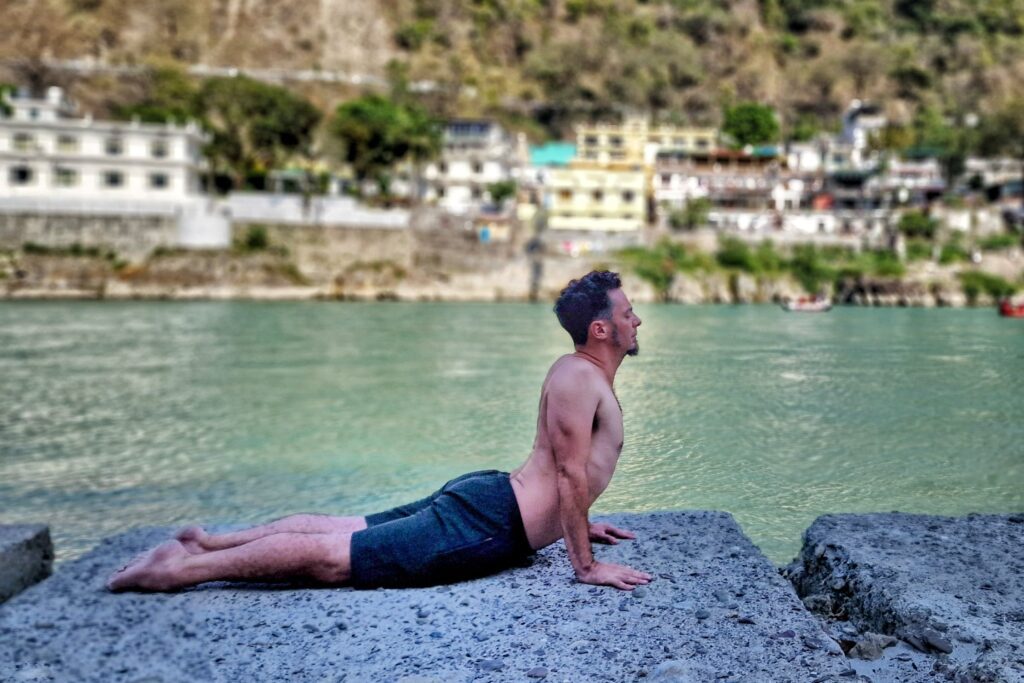
Bhujangasana is a powerful backend and a great asana to open up the chest, stretch the spine, and strengthen the back muscles. It is also known for its ability to stimulate the digestive system and increase energy levels.
To perform the version of Bhujangasana used in this kundalini kriya:
- Lie on your stomach with your legs together and your toes pointed behind you.
- Place your hands on the ground next to your shoulders, with your fingers pointing forward.
- Keep your elbows close to your body and your shoulders relaxed.
- Inhale and slowly lift your head, chest, and shoulders off the ground by straightening your arms, and using your hands to support your upper body.
- Keep your lower body relaxed, and your pelvis, legs, and feet on the ground.
- Keep your chin parallel to the floor or slightly up, gaze follows the head position, focus on pushing your chest forward.
Bhujangasana can be modified for different body types and levels of flexibility. If you have lower back problems, you may want to keep your elbows bent and your hands closer to your body to reduce the compression on your lower back.
6. Parvatasana (mountain pose)

Parvatasana (mountain pose) is the traditional Hatha yoga pose from which Downward Facing Dog (Adho Mukha Svanasana) was derived by the father of modern yoga T. Krishnamacharya.
The only difference with the more famous down dog is that the feet and legs are together instead of shoulder width apart a fundamental yoga pose that is commonly used as a resting pose in between other yoga asanas.
It is a simple yet powerful pose that can help to stretch the entire body, calm the mind, and increase energy levels by naturally engaging all three bandhas.
To perform Parvatasana in this kriya:
- From Bhujangasana, with feet together, spread your fingers wide and press your palms into the ground, keeping your arms straight and strong.
- exhale and tuck your toes under, lifting your hips up and back toward the sky.
- Straighten your legs and press your heels towards the ground.
- Internally rotate thighs and upper arms to create space in the lower back.
- Keep your head and neck relaxed, gazing towards your feet or your belly button.
Parvatasana can be modified for different body types and levels of flexibility. If you have wrist problems, you can place your forearms on the ground instead of your palms (dolphin pose), or you can practice the pose against a wall or with your hands on the sit of a chair to reduce the weight on your wrists.
How to practice the
Kundalini Kriya to Stimulate the Third Eye
(Agya or Ajna Chakra)
If possible, you should practice this kriya with closed eyes, without opening them from beginning to end. This will maximize the effect on the 3rd eye chakra.
You can practice this kriya once a week, alternating it with the other chakra kriyas. If you want to focus on Agya chakra, you can also practice it every day for a whole week, but we don’t recommend so unless you’re an expert kundalini practitioner already.
Step 1: Bhramari Pranayama + Shambavi Mudra [5-6 min]
Sit in a meditative position. Withdraw your senses by performing Shanmukti Mudra, rotate your eyes upward in Shambavi Mudra and start humming bhramari pranayama, each round as long as possible, then inhale and hold for a few seconds, bringing the attention to your feelings and sensations. Continue for 5/6 minutes.
Step 2: Ajna chakra asana flow [10 cycles]
- Balasana (1 round of bhramari pranayama with ears closed)
Perform Balasana (Child Pose) while humming the bee breath. Close your ear canals using your thumbs or index fingers.
- Bhujangasana (1 round of bhramari pranayama)
Inhale and transition to Bhujangasana (Cobra Pose), exhale with Bhramari while holding the cobra. Inhale again.
- Parvatasana (1 round of bhramari pranayama)
Transition to parvatasana (mountain pose/down dog) while exhaling with Bhramari, keep the hum as long as possible while holding the pose with a focus on the right alignment.
- Bhujangasana (just transition)
Transition again to bhujangasana while inhaling – there’s no humming in this last transition.
Step 3: Ajna meditation + Kaleshwara mudra [5/6 minutes]
Sit in a meditative position. Engage Kaleshwara mudra, and repeat the word “Ajna” or “Agya” out loud (ajapa) or mentally (japa), chant with emphasis on each syllable: “Ah, Jee, Naa” or “Ah, Gee, Ah”.
Bring your attention to the space between your eyebrows. Visualize the color indigo, in the form of a spinning crystal or as a fog surrounding you. If you have difficulties visualizing, try recalling to your memory the image of a night sky brightened by a full moon.
Continue this meditation for 5 to 6 minutes.
Step 4: Savasana [8-10 minutes]
Lay in savasana with your eyes closed.

